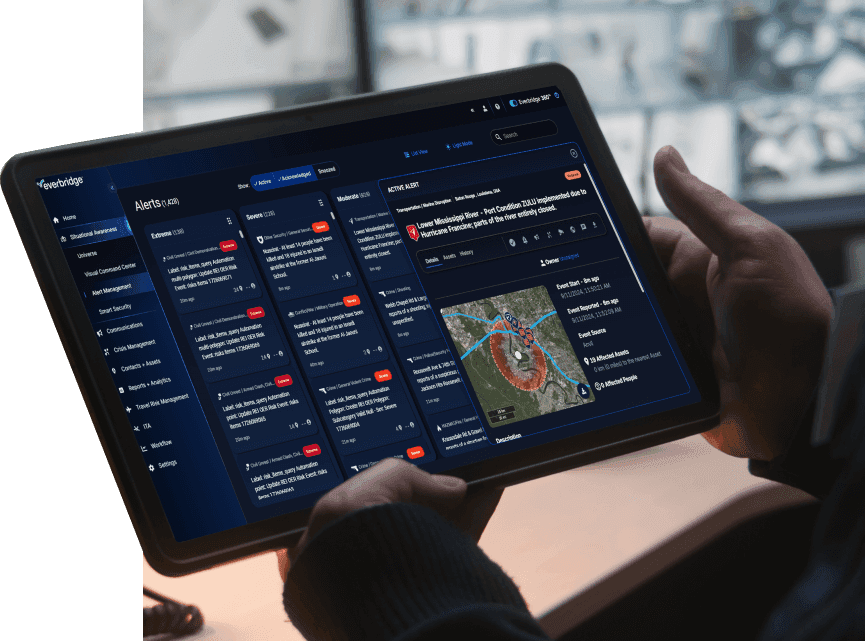In recent years, the landscape of campus safety has shifted dramatically. Campuses should be sanctuaries of learning, growth, and community. Unfortunately, the increasing frequency of safety incidents has highlighted the urgency of enhancing campus safety measures.
The Washington Post tracks school shootings and “the number of [school shooting] incidents has risen rapidly in recent years.” This reality emphasizes the necessity of fortified safety measures and proactive solutions. School officials, at K-12 and college campuses, need to implement solutions that can help prevent or mitigate the impact of these events.
Events of social and civil unrest are occurring with increasing frequency, and the varying nature of these events are adding to the complexity of ensuring a secure environment for students, staff, and property. While active assailant scenarios remain a critical concern, institutions must also prepare for a broader range of potential threats.
5 ways to bolster school and campus safety
1. Comprehensive emergency plans
Strategize with emergency plans and drills. A resilient campus safety strategy starts with meticulously crafted emergency plans. Institutions must outline precise protocols for various scenarios, ranging from natural disasters to active threats, with each demanding a distinct approach. Natural disasters demand swift evacuation and sheltering protocols, while active assailant scenarios necessitate lockdown and evacuation strategies. Schools must now consider protocols for responding to civil unrest and protests.
Detailed plans should include:
- Clear communication channels: utilize platforms like Everbridge to disseminate real-time information quickly and efficiently.
- Defined roles and responsibilities: ensure that all staff members know their specific duties during an emergency.
- Regular drills and simulations: conduct regular drills (fire, active shooter, lockdown, inclement weather, etc) to keep everyone prepared and to identify any areas for improvement.
2. Safety and evacuation training
Effective training programs are crucial in ensuring that students and staff are well-prepared for any emergency. Equipping the campus community with knowledge of evacuation/escape routes, safe zones, and assembly points is paramount. The Personal Safety Guidelines at George Fox University is an example of a clear, actionable safety plan that empowers individuals with the tools to react swiftly.
Beyond traditional drills for fire and active assailant scenarios, institutions should also train their communities on how to stay safe during events of civil unrest, protests, or riots. For example, creating detailed plans providing instructions on handling such situations, including paying attention to emergency notifications, knowing who to contact, and how to secure buildings.
Key training components:
- Civil unrest plans: provide clear guidelines on how to behave and what steps to take during civil unrest.
- Role-playing scenarios: engage participants in role-playing exercises to simulate various emergency situations.
- First aid training: equip staff and students with basic first aid skills to manage injuries until professional help arrives.
3. Implementing safety and security technology
Leveraging advanced technology can significantly enhance campus safety. Modern safety and security systems can integrate various tools and platforms to provide a cohesive and responsive safety network.
Technological solutions:
- Surveillance systems: high-definition cameras with facial recognition capabilities can help monitor campus activities.
- Access control: implement electronic access control systems to restrict entry to sensitive areas.
- Emergency notification systems: use platforms like Everbridge to send out mass notifications during emergencies.
The integration of these technologies into existing campus security strategies streamlines emergency response efforts, elevating the overall level of safety and security. With advanced technology solutions, campuses transition from reactive to responsive, ensuring safety in the face of adversity, when every second counts.
4. Enhancing physical security
Implement tangible physical security measures. The essence of effective campus security is translating strategy into reality. Physical security measures are the first line of defense against potential threats. By fortifying campus infrastructure, institutions can create a safer environment for everyone.
Physical security measures:
- Secure building entrances: install reinforced doors and windows and ensure that all entry points are monitored. Implement ID entry systems, panic buttons, and vigilant campus security officers.
- Lighting and visibility: improve campus lighting to deter criminal activities and increase visibility at night.
- Emergency stations: place emergency call stations throughout the campus to provide immediate access to help.
By minimizing vulnerabilities and maximizing protection, physical security measures play a crucial role in maintaining campus safety. To help security teams, Everbridge offers solutions that can enhance real-time situational awareness through a single common operation picture, as opposed to isolated systems and data. This helps teams more quickly and easily identify security risks without the need to toggle between disparate applications.
5. Conducting annual risk assessments
Regular risk assessments are essential for identifying vulnerabilities and making necessary improvements to campus safety protocols. These assessments should be comprehensive and consider all possible threats, including natural disasters, active shooters, and civil unrest.
Assessment strategies:
- Expert reviews: engage safety and security experts to conduct thorough evaluations of campus protocols.
- Feedback from the community: collect input from students, staff, and faculty to understand their concerns and suggestions.
- Action plans: develop and implement action plans based on the findings of the risk assessments.
Assessments drive continuous improvement, from assessing emergency plans and training effectiveness to scrutinizing access points, visitor management, surveillance coverage, evacuation routes, and illumination adequacy. By systematically evaluating all aspects of campus safety, institutions can adapt and enhance their security measures as needed.
Demonstrating a commitment to safety and security
Students and staff need to feel safe in their places of learning. Educational institutions are responsible for building a nurturing environment that prioritizes security without compromise. This requires taking a proactive approach to ensure a safe learning environment. This benefits both students and institutions because campus safety factors into students’ decision on which school to attend. According to a BestColleges survey, “The majority (60%) [of respondents] also say that campus safety was a factor they considered when choosing their college.” Campus leaders must prioritize safety and demonstrate what action they are taking to do so.
Ensuring campus safety and security requires a proactive and multifaceted approach, especially in today’s unpredictable environment. By developing comprehensive emergency plans, providing effective training, leveraging modern technology, enhancing physical security, and conducting regular risk assessments, institutions can create a safer and more secure campus for everyone. The solutions Everbridge offers can help schools foster an environment where learning flourishes and safety is a priority.
Increase your campus resilience by preparing now. You can find actionable insights from nearly 800 security professionals in the 2024 Active assailant preparedness report.

